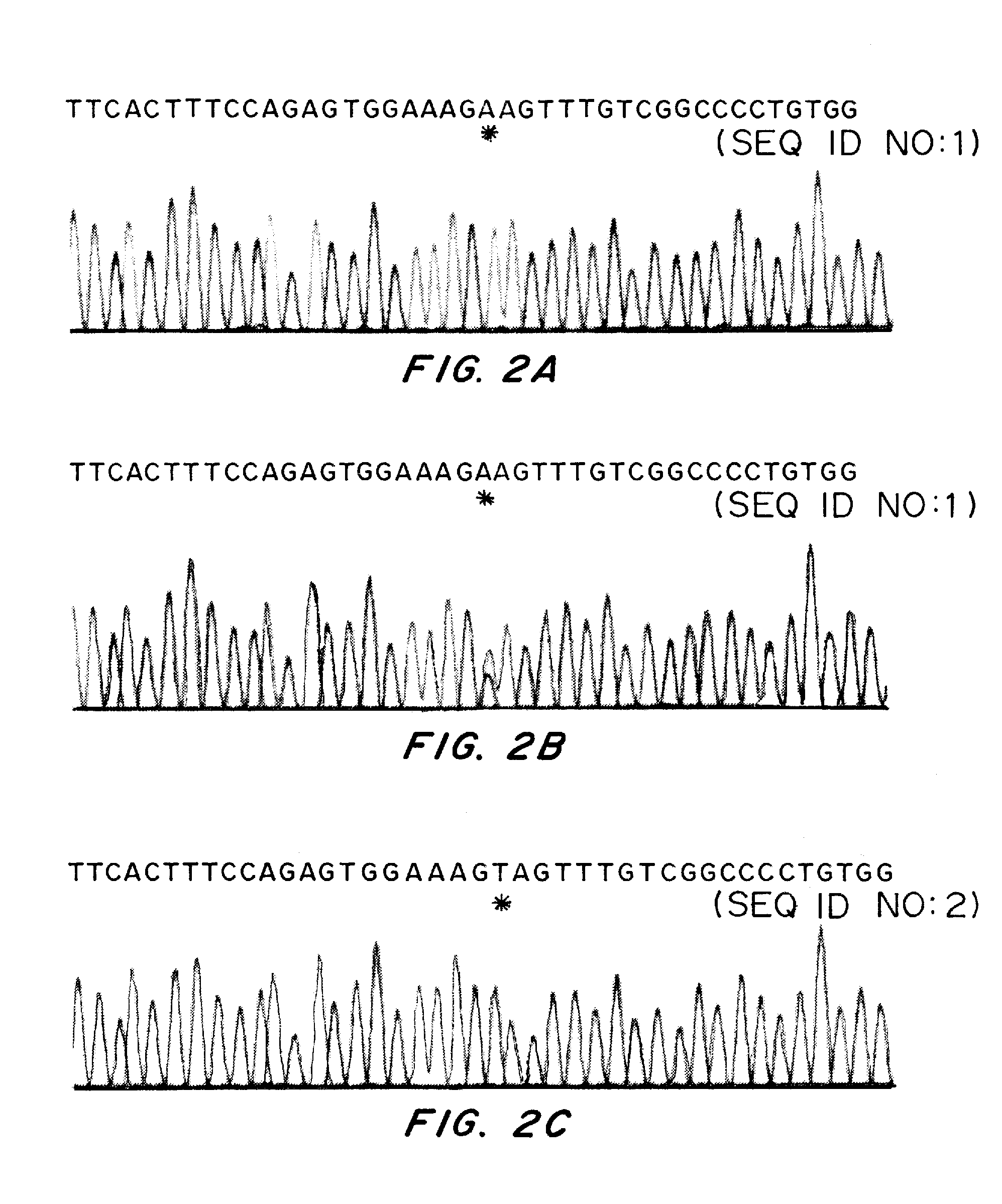Methods for identification of alport syndrome
a technology of alport syndrome and methods, applied in the field of gene testing in dogs, can solve the problem of not being able to identify causal mutations in these genes, and achieve the effect of reducing the number of false positives
- Summary
- Abstract
- Description
- Claims
- Application Information
AI Technical Summary
Problems solved by technology
Method used
Image
Examples
Embodiment Construction
Definitions
[0012]“Genetic marker” or “marker” as used herein refers to a variable or polymorphic nucleotide sequence that is present in genomic DNA, and which is identifiable with specific oligonucleotides (e.g., distinguishable by nucleic acid amplification and observance of a difference in size or sequence of nucleotides due to the polymorphism). The “locus” of a genetic marker or marker refers to its place on the chromosome in relation to another locus. Markers, as illustrated herein, can be identified by any one of several techniques know to those skilled in the art, including microsatellite or short tandem repeat (STR) amplification, analyses of restriction fragment length polymorphisms (RFLP), single nucleotide polymorphism (SNP), detection of deletion or insertion sites, and random amplified polymorphs DNA (RAPD) analysis.
[0013]“Co-segregate” as used herein refers to inheritance together of two specific loci; e.g., the loci are located so physically close on the same chromoso...
PUM
| Property | Measurement | Unit |
|---|---|---|
| structure | aaaaa | aaaaa |
| nucleic acid amplification | aaaaa | aaaaa |
| size | aaaaa | aaaaa |
Abstract
Description
Claims
Application Information
 Login to View More
Login to View More - R&D
- Intellectual Property
- Life Sciences
- Materials
- Tech Scout
- Unparalleled Data Quality
- Higher Quality Content
- 60% Fewer Hallucinations
Browse by: Latest US Patents, China's latest patents, Technical Efficacy Thesaurus, Application Domain, Technology Topic, Popular Technical Reports.
© 2025 PatSnap. All rights reserved.Legal|Privacy policy|Modern Slavery Act Transparency Statement|Sitemap|About US| Contact US: help@patsnap.com



